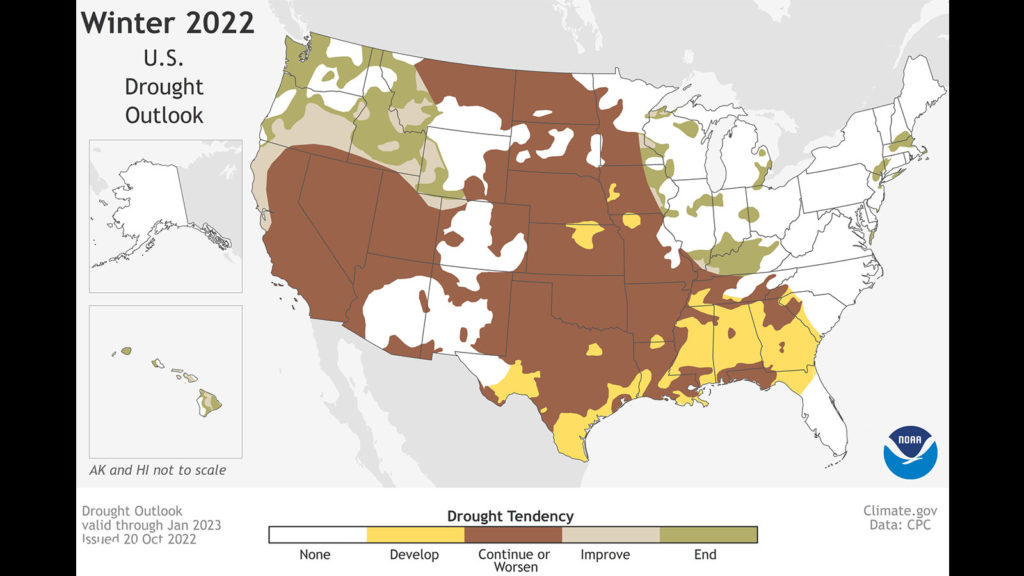Wyoming farmers and ranchers hoping for a drought-busting winter may be disappointed again, but the southwest part of the state could see some relief, the National Oceanic and Atmospheric Administration reports.
The southeast part of the state will continue to be impacted by the drought-inducing effects of La Niña while the rest of the Cowboy State will likely see no change in what’s become a yearslong dry spell, according to the NOAA.
Not A Sure Thing
Don Day, a Wyoming meteorologist and Cowboy State Daily contributor, said he takes NOAA seasonal outlooks with a grain of salt.
“I don’t pay much attention to NOAA’s long-range outlooks because most of the time, I disagree,” Day said.
La Niña is a climate phenomenon in which sea surface temperatures on the Pacific Ocean are lower by about several degrees fahrenheit. It’s opposite — the pattern with warmer temperatures — is El Niño. The phenomenon typically lasts longer than five months.
This will be the third year that La Niña has dried out the United States with more than half the country experiencing drought conditions.

Wildcard 2023
Day said the influence of La Niña tends to be underplayed too much.
“The tendency for strong La Niñas that cause drought is there. They just cause a lot more problems for this part of the world, but people tend to be more focused on El Niños because El Niño really has a huge impact on California,” Day said.
So while La Niña is influencing the weather in Wyoming, Day said it’s likely to lose steam in 2023.
“The second half of the winter, as it fades away, the long-range forecast becomes a little bit more of a wildcard,” Day explained.
Seasonal forecasts are much easier if there are strong signals of a La Niña or El Niño weather pattern.
“Your confidence goes up because historically, we have recognized patterns that tend to be associated with those,” Day said.
Matt Dewey, meteorologist with the National Weather Service office in Cheyenne, agreed, saying that precipitation into next year could go either way.
“The real big signal, especially for our area, is increased winds with La Niña,” Dewey said.
Snowpack Optimism
The NOAA outlook forecasts a 33% to 40% chance that the Big Horn Basin region may see some higher-than-average precipitation this winter.
The outlook doesn’t include snowpack. Snow forecasts, according to NOAA, are generally not predictable more than a week in advance.
Day explained that since the influence of La Niña will likely diminish next year, the state may see a better snowpack, which is key to lowering the state’s drought levels. Without precipitation early in the year it’s hard to catch up.
“When La Niña is around, it’s just not good news for everything. So it is really good news that it’s going to be going away. It’s a much more positive outlook with it going away for the spring season especially,” Day said.
Tough all over
Drought over the past couple of years has wreaked havoc on the state’s agriculture industry. The lack of moisture has made hay yields low, and as a result ranchers have had to pay much higher premiums to feed their cattle. Many ranchers have had to sell off parts of their herds because they won’t be able to feed them.
In spring 2021, 28% of the state was in severe drought conditions. At the time, parts of the state — such as Campbell County, where almost all the county was in severe drought conditions — had it much worse.
According to the U.S. drought monitor, much of Park and Sheridan counties now aren’t experiencing drought. Big Horn is the only county in the state that isn’t experience abnormally dry conditions or drought.
Most of Laramie County and the southern half of Goshen County are in extreme drought conditions.





